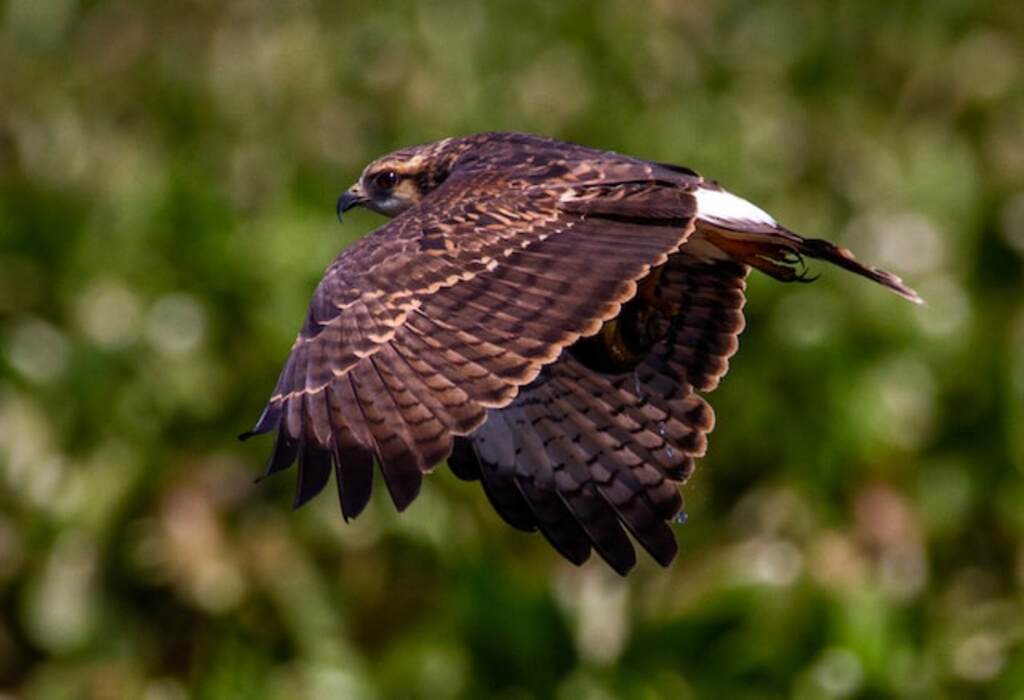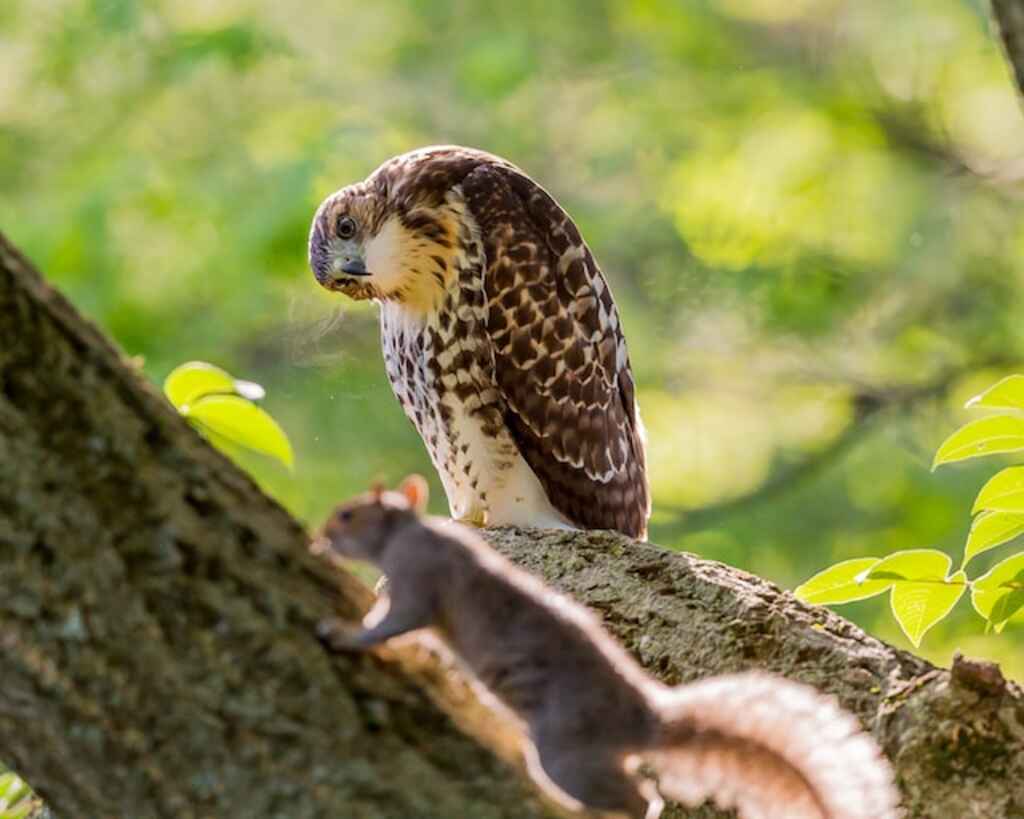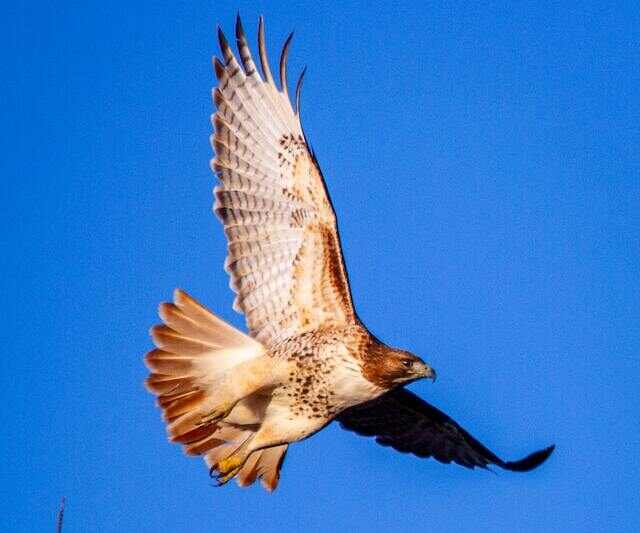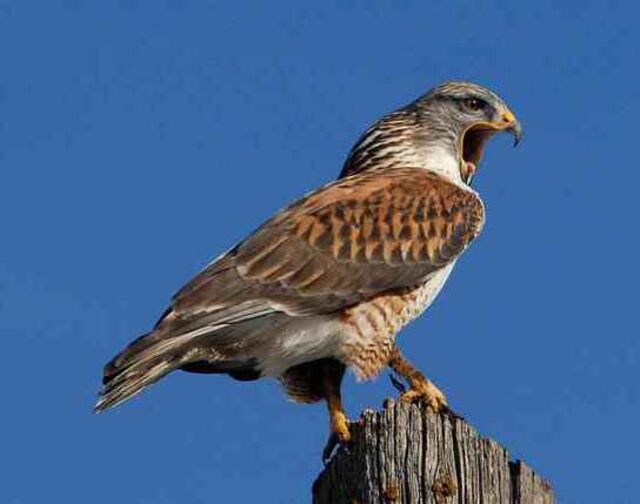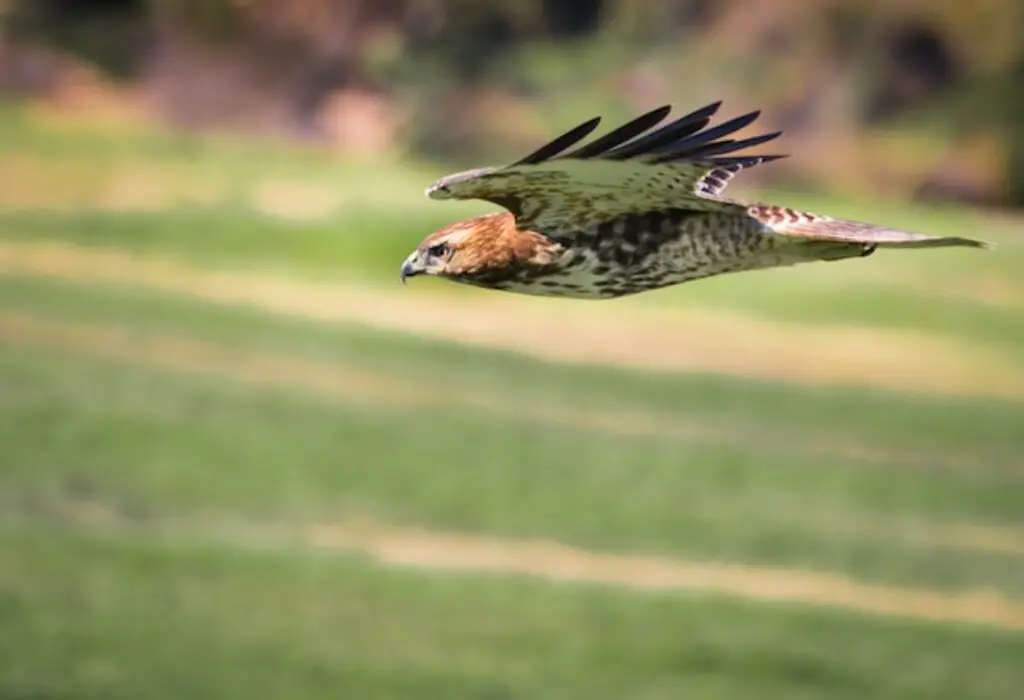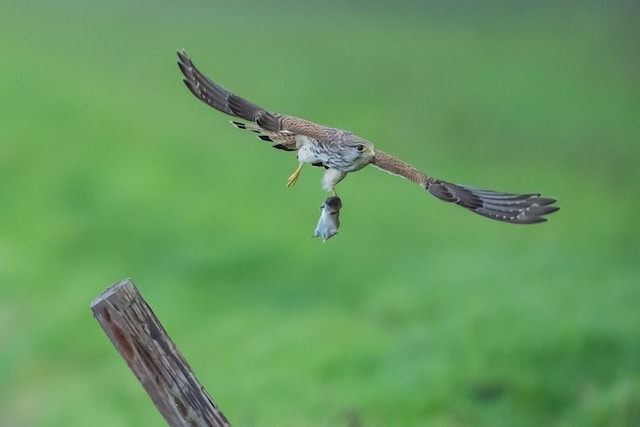How do hawks breathe? It’s a question that may have never crossed your mind until this very moment. Well, brace yourself for a feathered adventure into the world of avian respiration!
In this article, we’ll unveil the secret behind hawks’ breathtaking abilities, soaring through their airways and uncovering the fascinating mechanisms that keep these majestic creatures aloft.
Prepare to have your mind blown, and your fascination soar as we delve into the breathtaking world of hawks!
Table of Contents
- 1 The Importance of Breathing for All Living Creatures
- 2 Brief Overview of the Respiratory System in Birds
- 3 Focus on Hawks and Their Unique Respiratory System
- 4 How Do Hawks Breathe
- 5 Anatomy of a Hawk’s Respiratory System
- 6 The Science Behind Hawk Breathing
- 7 Unique Features and Adaptations in Hawk Respiratory System
- 8 Conclusion
- 9 FAQs: How Do Hawks Breathe?
- 9.1 How do hawks breathe?
- 9.2 Why do hawks have air sacs?
- 9.3 How do hawks extract more oxygen from each breath?
- 9.4 Can hawks breathe at high altitudes?
- 9.5 What role does efficient breathing play in hawks’ hunting abilities?
- 9.6 How does a hawk’s respiratory system compare to a human’s?
- 9.7 Do hawks have adaptations for breathing while diving?
- 9.8 How long can hawks soar without stopping to breathe?
- 9.9 Can hawks breathe underwater?
- 9.10 What are the implications of hawk breathing for conservation efforts?
- 10 Author
The Importance of Breathing for All Living Creatures
Breathing is a fundamental process for all living creatures, as it supplies the body with oxygen needed to fuel cellular respiration.
Through this process, cells convert glucose and other nutrients into adenosine triphosphate (ATP), the molecule that powers all biological functions.
Oxygen is also necessary for the removal of carbon dioxide, a waste product of metabolism that can be toxic if allowed to accumulate in the body.
Without adequate oxygen supply, cells start to die, and organs cannot function properly. This may lead to serious health issues or even death.
In humans, breathing is an automatic process controlled by respiratory centers in the brainstem that detect changes in blood acidity and regulate breathing accordingly.
However, birds have a unique respiratory system adapted to their high metabolic demands and aerial lifestyle.
Brief Overview of the Respiratory System in Birds
Birds are one of the few groups of animals capable of sustained flight. To achieve this feat, they need efficient respiratory systems that deliver oxygen directly to their muscles without wasting energy on breathing movements.
Unlike mammals, birds have unidirectional airflow through their lungs, as air travels from posterior air sacs (which fill up during exhalation) to anterior air sacs (which empty during inhalation) before reaching the lungs.
This system allows birds to extract more oxygen from each breath and prevents mixing of fresh and stale air within the lungs.
Additionally, birds have rigid lungs with many small tubes called parabronchi instead of our soft balloon-like sacs which we call alveoli that hold fresh air on every inhale/exhale cycle like humans do.
Focus on Hawks and Their Unique Respiratory System
Hawks are raptors known for their sharp vision and deadly talons. To catch their prey, they need to fly swiftly and maneuver quickly while minimizing energy expenditure.
Their respiratory system is perfectly adapted to these requirements.
Hawks have nine air sacs, including two cervical sacs located in their neck region.
This unique feature allows them to inflate their neck and head like a balloon during flight, reducing drag by smoothing out the contours of their body.
Hawks also have a high metabolic rate that demands a constant supply of oxygen-rich blood.
Their lungs feature numerous small air capillaries called para-bronchi, which provide an extensive surface area for gas exchange with blood vessels.
This enables hawks to extract more oxygen from each breath than other birds or mammals.
With this efficient respiratory system, hawks are able to soar at high altitudes for hours without stopping and dive at incredible speeds while hunting prey.
Hawks have an extraordinary respiratory system that is vital for their survival and success as apex predators.
As we continue to explore the wonders of the natural world, understanding how animals breathe can reveal profound insights into how evolution has shaped life on earth.
How Do Hawks Breathe
Hawks breathe using a unique respiratory system adapted for efficient flight. They have nine air sacs, including two cervical sacs in their neck. These sacs inflate during flight, reducing drag.
Hawks also have para-bronchi in their lungs, maximizing oxygen extraction. This enables them to soar at high altitudes and dive at incredible speeds while hunting prey.
Anatomy of a Hawk’s Respiratory System
Hawks have a unique respiratory system that differs greatly from those of mammals. Their respiratory system is adapted to meet the demands of their high-energy lifestyle, particularly when they are hunting or flying.
One of the most notable features of the hawk’s respiratory system is its air sacs. The air sacs in hawks are connected to their lungs and act as an extension of them.
This means that hawks have nine air sacs in total, compared to just two in humans.
The air sacs play an important role in facilitating efficient oxygen transfer throughout the body, extending the lungs’ capacity beyond what is possible with just one breath.
When a hawk inhales, it draws air into its posterior thoracic and abdominal air sacs. As it exhales, this air moves into its anterior thoracic and cervical (neck) air sacs before finally exiting through the trachea.
This process allows for unidirectional airflow through the lungs, which enables more efficient gas exchange.
Compared to human respiratory systems, hawks have much larger lungs relative to their body size.
Additionally, their lungs are much more rigid and do not expand and contract like mammalian lungs do when breathing. Instead, the expansion and contraction occurs within their many interconnected air sacs.
The hawk’s unique respiratory anatomy enables them to breathe efficiently while performing strenuous activities such as hunting or flying at high altitudes.
It also allows them to maintain high levels of oxygen saturation even during rapid movements like dives or acrobatic maneuvers.
The Importance of Airflow for Efficient Breathing
Efficient airflow through a bird’s respirator system is essential for survival due to their high-demand lifestyle, which requires plenty of energy continuously being supplied by oxygenated blood flow throughout all parts of their bodies, including eyesight maintenance.
Birds’ unique breathing mechanism allows them to quickly move air in and out of their lungs in order to deliver enough oxygen to support energy production.
This is made possible by their high metabolic rate, which demands a constant supply of oxygen-rich blood.
The directionality of airflow is also key for efficient gas exchange. Unlike humans, who have bidirectional airflow, birds have unidirectional airflow.
This means that air moves in one direction through the respiratory system and does not mix with stale air as it passes back out.
This allows for a greater concentration gradient of oxygen and carbon dioxide, resulting in more efficient gas exchange.
The Role of Air Sacs
As mentioned earlier, hawks have nine air sacs that are connected to their lungs. These air sacs play a vital role in facilitating unidirectional airflow and ensuring efficient gas exchange.
They also allow hawks to maintain high levels of oxygen saturation during strenuous activities such as hunting or flying at high altitudes.
The interconnectedness of the air sacs also means that they act as an extension of the lungs, effectively doubling their capacity without requiring an increase in lung size or volume.
This enables hawks to extract more oxygen from each breath than mammals can achieve.
Additionally, the rigid nature of hawk lungs means that they do not collapse or become obstructed during flight or other strenuous activities.
This ensures a constant supply of oxygenated blood flow throughout all parts of their bodies, even when airspace is restricted due to exertion like dives or acrobatic maneuvers.
Comparison to Human Respiratory System
Compared to human respiratory systems, bird respiratory systems are much more efficient at extracting oxygen from each breath due to differences in lung structure and function.
While humans draw air into their nasal passages before moving it down into the trachea and bronchi, birds take advantage of unidirectional flow through specialized air sacs connected directly to the bronchi, which allows for greater extraction of oxygen in between breathing cycles.
Hawks have a highly-adapted respiratory system that enables them to breathe efficiently and maintain high levels of oxygen saturation during strenuous activities.
The interconnected air sacs act as an extension of the lungs and allow for unidirectional airflow, resulting in more efficient gas exchange.
Compared to human respiratory systems, the bird’s respiratory system is much more efficient at extracting oxygen from each breath due to differences in lung structure and function.
The Importance of Efficient Breathing for Hawks
Breathing is essential for all living creatures, and hawks are no exception. However, the importance of efficient breathing is even more critical for birds of prey like hawks than it is for other bird species.
This is because hawks require a tremendous amount of energy to fly, hunt, and survive in their natural habitats.
Inefficient breathing would result in lower oxygen levels and decreased energy production, which could ultimately lead to a hawk’s demise.
Explanation of why hawks need to breathe efficiently
Hawks have a high metabolic rate that requires them to consume large amounts of oxygen. This means that they must take in more air with each breath than other bird species.
Additionally, when hunting, hawks need to be able to take in large volumes of air quickly to sustain short bursts of high-intensity activity such as diving or chasing prey.
Efficient breathing allows them to do this effectively.
Discussion on how this affects their hunting abilities
The ability to breathe efficiently is crucial for the success of a hawk’s hunting endeavors. When hunting prey, hawks require an enormous amount of energy quickly and must be able to recover from rapid exhaustion equally fast.
With their unique respiratory system, they can inhale large amounts of air with each breath and extract an incredible amount of oxygen from it before exhaling it out.
This gives them the necessary boost required during flight or when attacking their prey, without losing endurance quickly or feeling fatigued during long flights while scanning for new targets.
Therefore, efficient breathing helps enhance the hawk’s speed and agility, while also extending its hunting range.
Comparison with other bird species
Compared with most bird species that only use about 30% percent or less (of lung capacity) during normal activity or high-energy tasks such as flying or singing, Hawks can use up to 85% of their capacity, and their air sacs, which are connected to their lungs, allow for continuous airflow through the lungs without pause.
This is unique compared to other bird species that have a more traditional “tidal breathing” mechanism (inhale and exhale) in which air moves in and out of the same passages.
Hawks’ respiratory system gives them a significant advantage over other birds when it comes to flying and hunting.
They can fly at higher altitudes and faster speeds than most other birds.
Their unique ability to extract oxygen from each breath effectively also gives them an impressive amount of endurance during flight, allowing them to cover longer distances while searching for prey or traveling during migration.
The Science Behind Hawk Breathing
Overview of how oxygen is transported throughout the body
Hawks have a highly efficient respiratory system that allows them to transport oxygen throughout their body at a much faster rate than humans.
The process starts with the hawks inhaling fresh air through their nostrils, which then travels down to their lungs.
In addition to the lungs, hawks also possess nine air sacs that play a crucial role in respiratory function.
These air sacs are connected to the lungs and extend throughout the bird’s body, even into some of its bones.
As the hawk inhales fresh air into their lungs, oxygen diffuses into tiny air sacs called alveoli.
From there, it moves into tiny blood vessels called capillaries surrounding the alveoli, where it binds to red blood cells and is carried around the bird’s body.
Explanation of how hawks are able to extract more oxygen from each breath than humans
Hawks are able to extract more oxygen from each breath than humans because of two primary factors: their larger lung capacity and unique structure and function of their respiratory system.
Compared to humans, who have relatively small lung capacities, hawks’ larger lungs and nine interconnected air sacs allow for a greater volume of fresh air with each breath.
Additionally, unlike humans who have one-way airflow through our lungs during inhalation and exhalation, hawks have a complex system that allows for two-way airflow through their respiratory tract.
This means that while they inhale fresh oxygen-rich air, they can also exhale stale carbon dioxide-rich air at the same time.
Another key factor in their ability to extract more oxygen is due to adaptations in their red blood cells.
Hawks’ red blood cells contain high levels of hemoglobin – an iron-containing protein that binds with oxygen – allowing them to carry more oxygen throughout their body.
Discussion on how this relates to their high metabolism and energy requirements
Hawks have a very high metabolism, which means they need to consume a lot of energy to survive.
Their unique respiratory system plays a critical role in meeting these energy demands by providing them with the necessary oxygen to support their high metabolic rate.
By extracting more oxygen from each breath, hawks are able to fuel their muscles for flight and hunting.
This is especially important during sustained periods of activity, such as long-distance flights or chasing down prey.
Additionally, this high level of oxygen delivery allows for efficient waste removal in the body – specifically carbon dioxide – allowing the hawk’s body to function optimally even during intense physical exertion.
Overall, the science behind hawk breathing is fascinating and incredibly complex.
By understanding how these birds are able to extract more oxygen from each breath compared to humans, we can begin to appreciate the incredible adaptations that have allowed hawks to become such efficient predators in their natural environment.
Unique Features and Adaptations in Hawk Respiratory System
Lungs for High Altitude Flying
Hawks have to fly at high altitudes while hunting, which requires an efficient respiratory system. The lungs of hawks are unique and different from other bird species.
They have a higher number of air sacs inside their lungs, which help them extract more oxygen from each breath compared to other birds.
These extra air sacs also allow hawks to breathe more efficiently, enabling them to fly at high altitudes.
The lungs of hawks are also lighter than those in other birds, as they lack the fleshy bronchioles that are present in most avian lungs.
This adaptation allows for increased efficiency during flight by decreasing the overall weight of the bird.
Breathing While Diving
Hawks have another unique feature that allows them to breathe while diving at high speeds during hunting: they don’t use their beaks for breathing. Instead, they breathe through small holes located on the sides of their beaks called nares.
This allows them to keep their beak closed while making sharp dives toward prey without losing any precious oxygen.
Their nasopharyngeal ducts play a crucial role in this adaptation, allowing air to flow into the respiratory system even when the beak is closed.
These ducts connect the nares with internal chambers within the skull called choanae; from there, air is circulated throughout the respiratory system.
Comparison with Other Bird Species
There are several other bird species with similar adaptations for high-altitude flying and diving at high speeds; examples include falcons and eagles.
However, hawks’ respiratory systems remain unique due to their greater efficiency in extracting oxygen from each breath.
In addition, unlike some species of falcons and eagles that use mouth breathing when necessary, hawks rely exclusively on their nares for air intake.
As a result, they are better adapted to high-speed diving and can maintain higher energy levels for longer periods.
Implications for Conservation
Understanding the unique respiratory adaptations of hawks can have significant implications for conservation efforts.
The ability of hawks to adapt to changing environments and to thrive in different habitats is directly dependent on their respiratory system’s efficiency.
As human activities continue to alter our environment, understanding these adaptations becomes increasingly important in preserving the health and diversity of bird populations.
By studying how birds like hawks breathe, researchers can gain crucial insights into how best to protect these species as they continue to face new challenges in the future.
Conclusion
The respiratory system of hawks is a fascinating subject that provides insight into the unique adaptations and evolutionary processes that have allowed these birds to thrive in their environments.
The air sacs and special lung features in hawks not only allow them to fly at high altitudes but also enable them to hunt efficiently and survive in harsh conditions.
Efficient breathing is crucial for all living creatures, and hawks have taken this process to a whole new level.
Their ability to extract more oxygen from each breath than humans is truly remarkable, considering their high metabolism and energy requirements.
This helps them maintain their physical fitness and agility while hunting for prey.
The anatomy of a hawk’s respiratory system provides an excellent example of how nature adapts to environment through evolution.
The unique features of hawks’ respiratory system give us insights into how these birds have survived over millions of years.
Hawks’ high altitude flying abilities enabled them to access new food sources and escape predators.
We can learn much from observing nature’s solutions, such as how the hawk has adapted its respiratory system over millions of years.
We should strive to apply similar principles in human engineering, improving our technology by studying natural systems like these with advanced respiratory abilities.
It is clear that the hawk’s respiratory system is an impressive feat of evolution that has allowed these birds to adapt to harsh environments with ease.
The anatomical structure enables efficient breathing that ultimately leads them toward success in hunting prey while soaring at incredible heights above the ground.
Understanding the unique traits that make up birds like hawks can help us appreciate nature more fully, while also uncovering valuable insights into our own capabilities as humans.
By studying how biological systems work so well together, we can improve everything from medical treatments for patients with breathing difficulties or build better engines for aircraft by borrowing ideas from wildlife biology research on avian respiration at high elevations.
FAQs: How Do Hawks Breathe?
How do hawks breathe?
Hawks breathe using a unique respiratory system. They have air sacs, including cervical sacs in their neck, which inflate during flight, reducing drag. Their lungs have para-bronchi, maximizing oxygen extraction for high-altitude soaring and diving during hunting.
Why do hawks have air sacs?
Hawks have air sacs to facilitate efficient breathing during flight. These sacs, including the cervical sacs in their neck, inflate and help reduce drag by smoothing out the contours of their body.
How do hawks extract more oxygen from each breath?
Hawks have para-bronchi in their lungs, which provide a large surface area for gas exchange. This allows them to extract more oxygen from each breath than other birds or mammals, supporting their high metabolic rate and energy demands.
Can hawks breathe at high altitudes?
Yes, hawks are able to breathe at high altitudes due to their efficient respiratory system. Their para-bronchi and air sacs enable them to extract oxygen effectively, allowing them to soar at great heights without difficulty.
What role does efficient breathing play in hawks’ hunting abilities?
Efficient breathing is crucial for hawks’ hunting abilities. It provides the oxygen necessary to sustain their high metabolism, allowing them to fly swiftly, maneuver quickly, and maintain energy during hunts.
How does a hawk’s respiratory system compare to a human’s?
A hawk’s respiratory system is more efficient than a human’s. Hawks have air sacs, cervical sacs, and para-bronchi, allowing them to extract more oxygen from each breath. Humans lack these adaptations, making hawks better suited for high-performance flying.
Do hawks have adaptations for breathing while diving?
Yes, hawks have adaptations for breathing while diving. Their unique respiratory system, including air sacs and efficient gas exchange in the lungs, enables them to maintain oxygen supply during rapid dives while hunting prey.
How long can hawks soar without stopping to breathe?
Hawks can soar for hours without stopping to breathe. Their efficient respiratory system and oxygen extraction capabilities allow them to sustain flight at high altitudes, conserving energy and maximizing their hunting potential.
Can hawks breathe underwater?
No, hawks cannot breathe underwater. They are adapted for aerial respiration and rely on air for breathing. While they can dive into water to catch prey, they must resurface to breathe properly.
What are the implications of hawk breathing for conservation efforts?
Understanding hawk breathing is essential for conservation efforts. By recognizing the unique adaptations of their respiratory system, conservationists can identify factors that may impact their ability to thrive, such as air pollution or habitat degradation.

